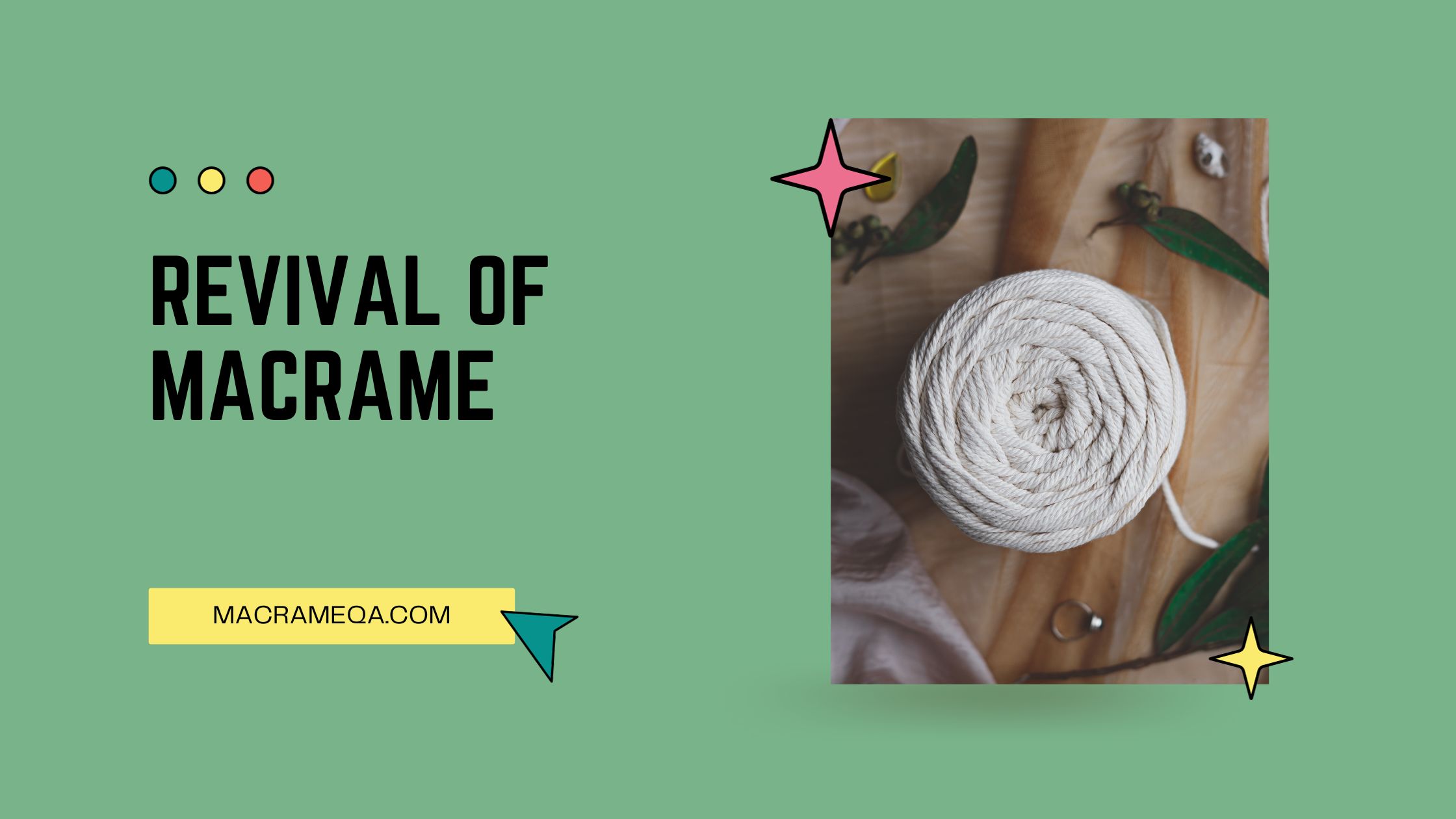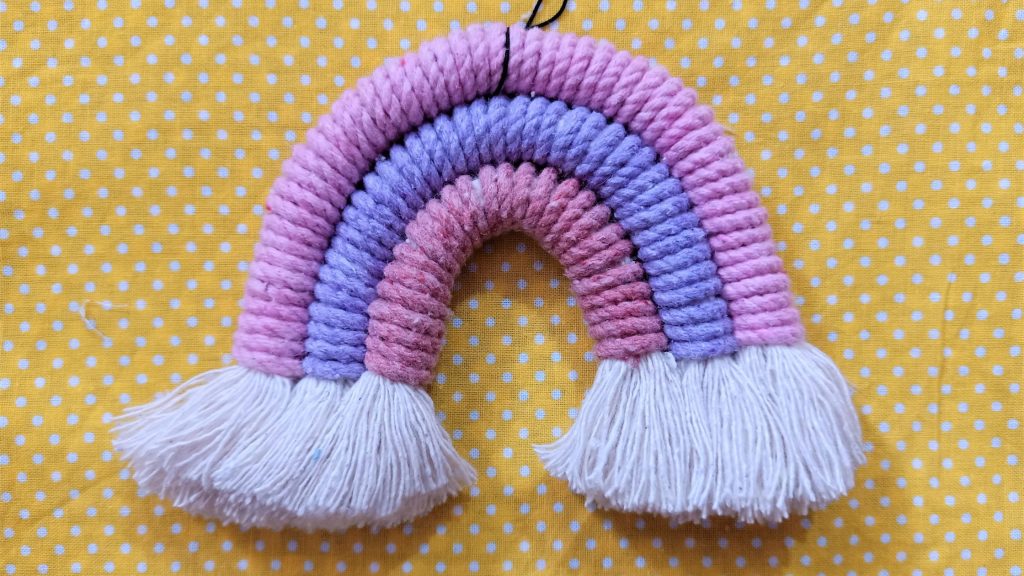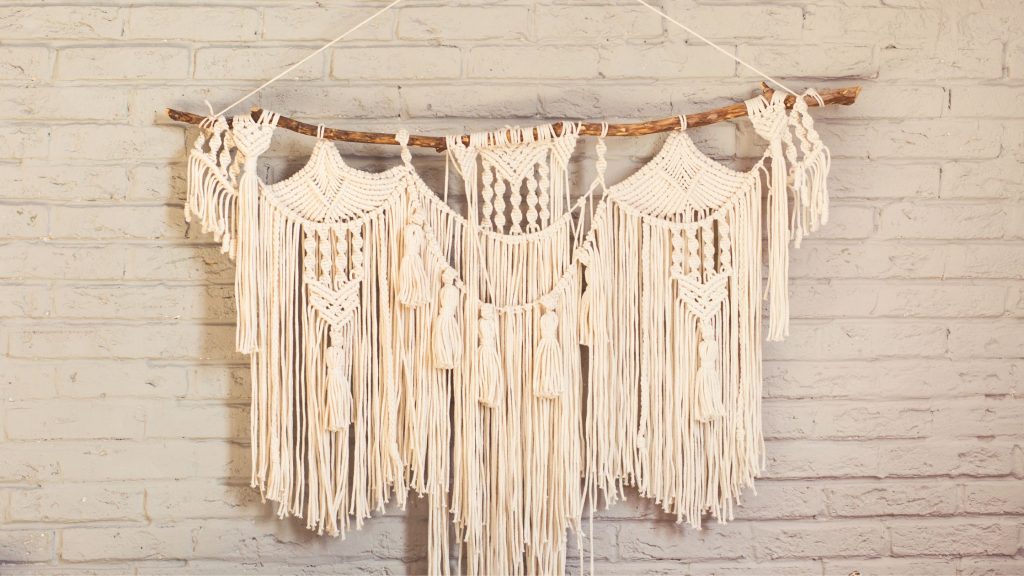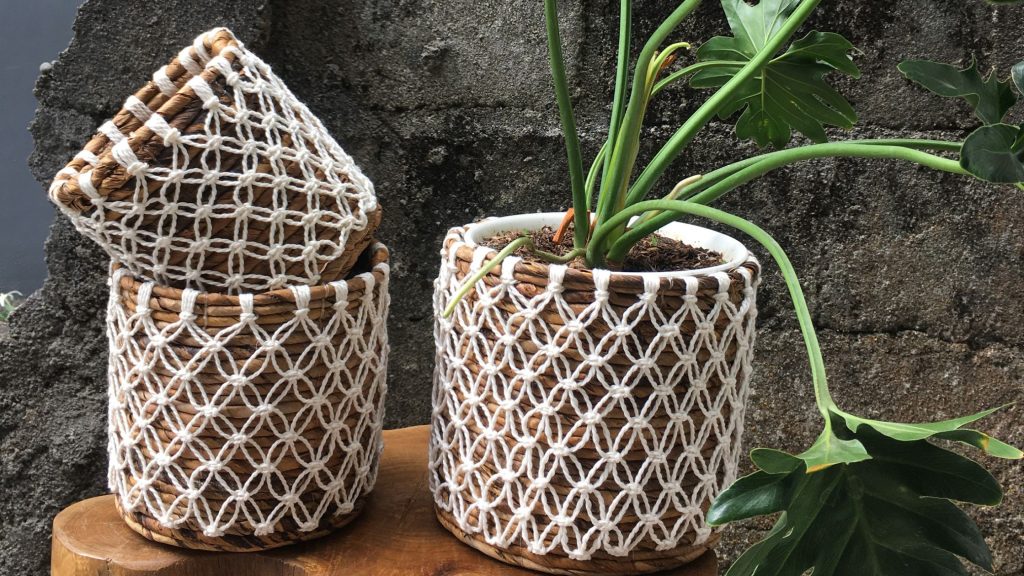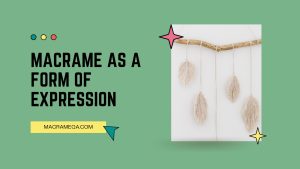In this article, you will discover the historical periods that have witnessed the captivating revival of macrame. From ancient civilizations to the bohemian era, macrame has endured the test of time, weaving its intricate patterns into the fabric of our history. Step into the intriguing world of macrame and uncover the fascinating periods that embrace this timeless craft.
Ancient Times
Egyptian Era
Macrame, the art of creating intricate patterns and designs using knots, can trace its roots back to the ancient Egyptian era. Egyptians used macrame techniques to create decorative fringes and tassels for their garments and accessories. These intricate knots were not only aesthetically pleasing but also served functional purposes, such as securing clothing and preserving the shape of the fabric. Macrame flourished during this era, showcasing the Egyptians’ craftsmanship and attention to detail.
Chinese Dynasties
Macrame techniques also found their way into ancient Chinese dynasties. The Chinese used macrame to create elaborate knot patterns for decorative purposes. These intricate designs adorned clothing, accessories, and even household items. Macrame became a symbol of status and wealth, with higher-ranking individuals showcasing their elevated social standing through the complexity and elegance of their macrame creations. The delicate art of macrame continued to evolve throughout various Chinese dynasties, leaving a lasting impact on textile traditions.
Mayan Civilization
The Mayan civilization, known for its rich cultural heritage, also played a significant role in the revival of macrame. Mayans utilized macrame techniques extensively in their daily lives, creating intricate hammocks, clothing, and accessories. Macrame served both functional and decorative purposes for the Mayans, allowing them to showcase their craftsmanship while also providing practical solutions for everyday needs. The Mayan civilization’s contribution to macrame showcased the versatility and adaptability of this art form, solidifying its importance in historical contexts.
Renaissance Period
Revival of Macrame in Europe
The Renaissance period marked a significant revival of macrame in Europe. Influenced by the art and culture of the ancient Egyptians and Chinese, European artisans began incorporating macrame techniques into their creations. Macrame became highly sought after as a decorative element, adorning garments, furniture, and even architecture. The revival of macrame in Europe during the Renaissance period brought this ancient art form back into the spotlight, captivating the imaginations of artists and craftsmen.
Techniques and Designs
During the Renaissance period, macrame techniques and designs became more refined and intricate. Artists and craftsmen explored various knotting methods, creating elaborate and complex patterns. The popularity of macrame led to the development of pattern books and instructional guides, allowing individuals to learn and master the art form. Renaissance macrame designs featured motifs inspired by nature, classical mythology, and geometric shapes. These intricate patterns showcased the skill and creativity of the artisans, elevating macrame to new heights of artistic expression.
19th Century
Macrame’s Popularity in Victorian England
Macrame experienced a resurgence of popularity during the 19th century in Victorian England. Victorian society, known for its love of ornate decor and fashion, embraced macrame as a way to add elegance and luxury to their homes and wardrobes. Macrame curtains, tablecloths, and clothing accessories became coveted items among the upper classes. Macrame’s popularity in Victorian England was a testament to its versatility as a decorative art form that could be adapted to suit various purposes and aesthetics.
Macrame in America
As macrame continued to gain popularity in Europe, its influence reached American shores. The art of macrame found a new audience in America during the 19th century, particularly with the rise of the Arts and Crafts movement. American artists and craftsmen embraced macrame as a way to incorporate handcrafted elements into their creations. Macrame plant hangers, wall hangings, and jewelry became popular among American artisans and homemakers, showcasing the adaptability and versatility of macrame in different cultural contexts.
Art Nouveau Movement
Macrame and the Art Nouveau Style
The Art Nouveau movement, known for its nature-inspired designs and fluid lines, provided a perfect platform for macrame’s resurgence. Macrame became intertwined with the Art Nouveau style, with its intricate knots and flowing patterns blending seamlessly with the movement’s aesthetic. Macrame elements adorned furniture, clothing accessories, and decorative pieces, adding an organic and dynamic touch to Art Nouveau designs. The synergy between macrame and the Art Nouveau movement highlighted the art form’s ability to transcend time and seamlessly adapt to contemporary artistic styles.
Influence on Decorative Arts
The Art Nouveau movement’s embrace of macrame had a significant influence on decorative arts. Macrame techniques were incorporated into various art forms such as stained glass, metalwork, and ceramics. Artists saw macrame as a way to add texture and depth to their creations, emphasizing the importance of craftsmanship and handmade elements. The Art Nouveau movement paved the way for macrame’s integration into other art forms, expanding its reach and impact on the artistic world.
Hippie Movement
Macrame in the 1960s Counterculture
The 1960s counterculture movement, also known as the Hippie movement, brought macrame back into the public eye. As a symbol of peace, freedom, and self-expression, macrame appealed to the ideals championed by the Hippie movement. Macrame plant hangers, wall hangings, and clothing adorned with macrame elements became iconic symbols of the Hippie lifestyle. Macrame workshops and communal craft sessions flourished, allowing individuals to express their creativity and connect with like-minded individuals. Macrame’s resurgence during the Hippie movement represented a return to the handmade and an embrace of alternative lifestyles.
Symbolism and Expression
Macrame’s popularity during the Hippie movement was not solely based on its aesthetic appeal but also its symbolic and expressive nature. The act of knotting and creating intricate patterns embodied a sense of mindfulness and interconnectedness. Macrame allowed individuals to channel their emotions and beliefs into tangible creations, serving as both a form of personal expression and a symbol of unity within the counterculture movement. The symbolism and expressive qualities of macrame during the 1960s exemplified its ability to transcend mere decoration and become a means of self-discovery and personal transformation.
Modern Macrame
Contemporary Macrame Artists
In the 21st century, macrame has undergone a renaissance, with contemporary artists pushing the boundaries of traditional techniques. A new wave of macrame artists emerged, combining traditional knotting methods with innovative materials and designs. These artists experiment with scale, color, and texture, creating large-scale installations, wearable art, and mixed-media pieces. Their work showcases the versatility of macrame as a medium for contemporary artistic expression, establishing its place in the modern art world.
Macrame in Interior Design
Macrame has experienced a resurgence in interior design, with designers and homeowners incorporating macrame pieces into their spaces. Macrame wall hangings, curtains, and room dividers add texture and visual interest to interiors, creating a bohemian and eclectic ambiance. Macrame’s natural fibers and handcrafted qualities complement a variety of design styles, from minimalistic to rustic. In the realm of interior design, macrame represents a return to artisanal craftsmanship and a celebration of handcrafted elements within contemporary spaces.
Macrame in Fashion
Macrame has also made a comeback in the world of fashion. Designers have integrated macrame elements into garments, accessories, and even footwear. Macrame dresses, handbags, and statement jewelry bring a unique and textured flair to fashion runways. The revival of macrame in fashion highlights its role as a versatile medium that transcends traditional textile techniques. By incorporating macrame into fashion, designers showcase their creativity and ability to merge different artistic disciplines.
Macrame Renews in the 21st Century
Online Macrame Communities
The 21st century witnessed the rise of online macrame communities, connecting enthusiasts and artists from around the world. Online platforms and social media groups provide a space for macrame lovers to share their creations, exchange ideas, and showcase their talent. These communities have contributed to the revival of macrame by fostering a sense of community and encouraging creativity. Online resources, tutorials, and patterns have made macrame accessible to novices and inspired seasoned artists to explore new techniques and designs.
Macrame Workshops and Classes
Macrame workshops and classes have become increasingly popular, offering individuals the opportunity to learn and practice this ancient craft. These hands-on experiences provide a chance to connect with like-minded individuals and learn from experienced instructors. Macrame workshops and classes range from beginner-level sessions to advanced techniques, catering to individuals at all skill levels. The resurgence of macrame in workshops and classes reflects a growing interest in artisanal crafts and a desire to reconnect with traditional craftsmanship.
Sustainability and Macrame
Eco-friendly Material Choices
In an era marked by a focus on sustainability and eco-consciousness, macrame has gained attention for its use of natural and biodegradable materials. Macrame artists and enthusiasts often select materials such as cotton, hemp, and jute, which are renewable and have a lower environmental impact compared to synthetic fibers. By choosing eco-friendly materials, macrame practitioners contribute to the reduction of waste and the preservation of the environment. The emphasis on sustainable material choices has made macrame an attractive craft for those seeking to minimize their ecological footprint.
Macrame as a Sustainable Craft
Macrame itself aligns with the principles of sustainability due to its minimal need for tools and equipment. The art form requires only a few basic supplies, primarily consisting of knots created with hands. This simplicity allows macrame to be accessible to individuals in various settings, whether in the comfort of their homes or communal craft spaces. Additionally, macrame can repurpose materials and upcycle fabrics, further reducing waste and promoting sustainability. The inherent sustainability of macrame contributes to its continued relevance and appeal in a world striving for environmental consciousness.
Macrame as a Therapeutic Craft
Mental Health Benefits
Engaging in macrame can have a positive impact on mental health and well-being. The rhythmic and repetitive nature of knotting and creating macrame designs can induce a state of relaxation and mindfulness. Macrame provides a meditative experience, allowing individuals to focus their attention on the present moment and relieve stress. Moreover, the sense of accomplishment and satisfaction that comes with completing a macrame project can boost self-esteem and provide a sense of purpose. Macrame’s therapeutic qualities have made it a popular craft for individuals seeking a creative outlet and a way to enhance their overall well-being.
Macrame Therapy Programs
Macrame has also found a place in therapy programs, where it is utilized as a therapeutic tool to promote healing and self-expression. Macrame therapy programs offer individuals a safe space to explore their emotions and experiences through the creation of macrame projects. The process of knotting and crafting becomes a metaphorical representation of personal growth and transformation. Macrame therapy programs allow individuals to communicate their thoughts and feelings in a nonverbal and tactile manner, providing an alternative means of expression and facilitating healing in various therapeutic settings.
Fashion Revival
Macrame on the Runway
Fashion designers have embraced macrame as a way to infuse their collections with texture and artistry. Macrame garments and accessories have appeared on runways, captivating audiences with their intricate knots and unique designs. Fashion houses recognize the allure of macrame and its ability to elevate garments from mere clothing to wearable art. By incorporating macrame into their runway collections, designers reinvigorate the art form and reintroduce it to a wide audience, solidifying its place in the fashion industry.
Macrame in High-End Fashion
Macrame has also made its mark in the world of high-end fashion. Luxury brands have incorporated macrame elements into their collections, utilizing the art form’s craftsmanship and beauty to create one-of-a-kind pieces. Macrame dresses, handbags, and accessories exemplify the merging of traditional techniques with contemporary design aesthetics. The fashion revival of macrame in high-end brands reflects a desire for unique, handcrafted pieces that embody both history and innovation.
Conclusion
From its ancient origins to its contemporary resurgence, macrame has stood the test of time as an art form that transcends cultures and eras. Each historical period has contributed to its evolution and revival, highlighting its versatility, aesthetic appeal, and therapeutic qualities. As macrame continues to captivate artists, designers, and craft enthusiasts in the 21st century, its future remains bright, offering endless possibilities for creative expression in various fields, from interior design to high-end fashion.

